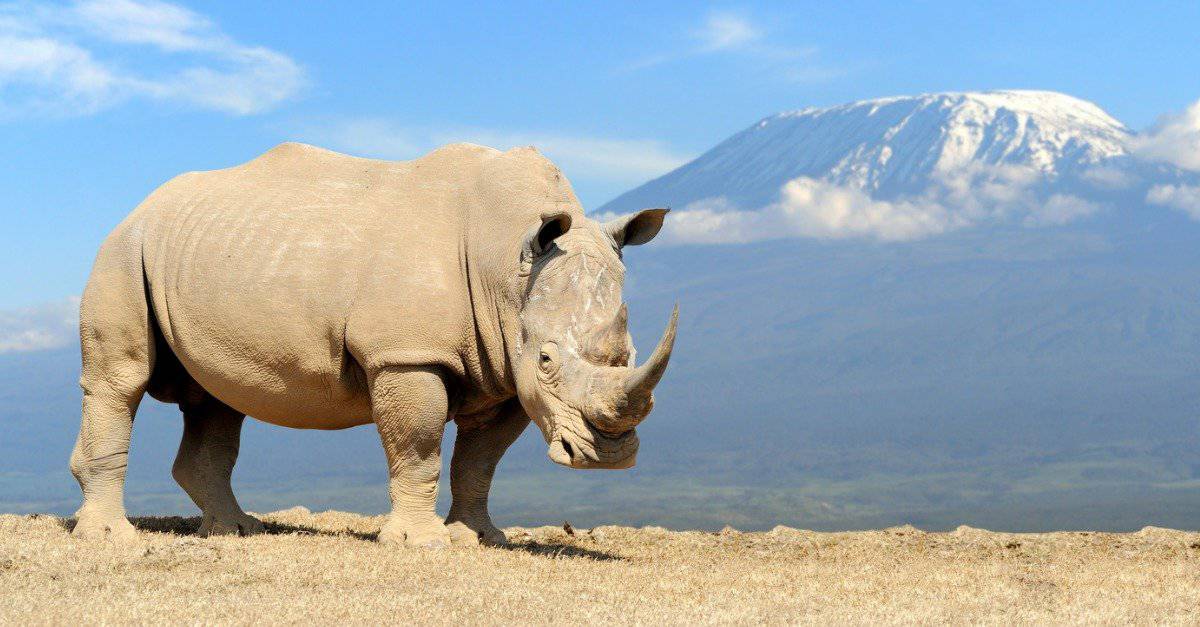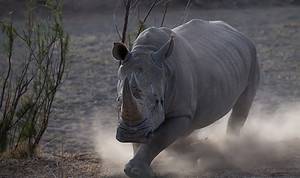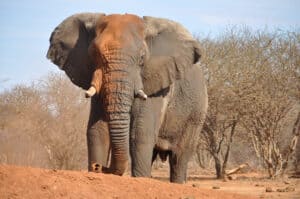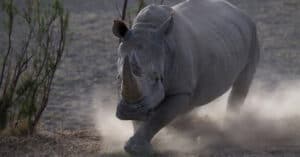They’ve been playfully called “unicorns in battle armor,” but rhinoceroses are no joke! They have the mass and speed of a small car: weighing a ton and running at over 30 miles per hour. Rhinoceros skin is up to 2 inches thick, so it can even stop some small-caliber handgun bullets! And the rhino can fight back, hard. Not only can it trample its prey, but it can gore them with a nose horn 20-55 inches long.
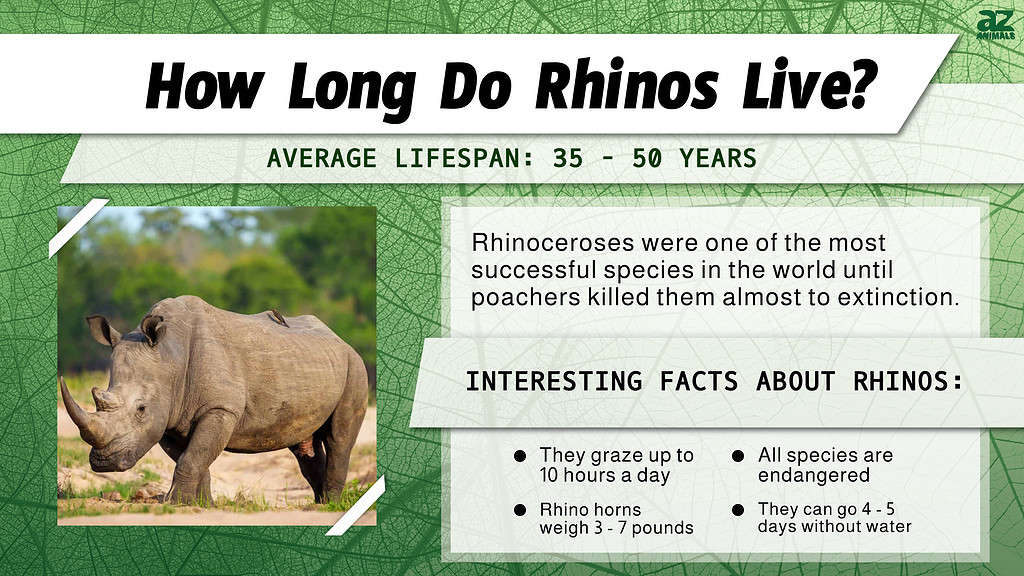
Unfortunately for them, rhino horn is so valued in traditional Asian medicine that it fetches $60,000 a pound on the black market – more than gold, diamonds, or cocaine! With payoffs like that, poachers have hunted rhinos nearly to extinction. Thus, while they should live anywhere from 35-50 years, the lifespans of wild rhinos today are often cut far shorter. Read on to learn more about these magnificent creatures that may in the future become as mythical as the unicorn.

How Many Species of Rhinoceros Are There?
Rhinoceroses were one of the most successful species in the world until recent years. Paleontologists have unearthed over 100 extinct species of them, but only 5 species remain today. At the start of the 20th century they numbered over half a million in Africa but today have dwindled to about 27,000. The white rhino is subdivided into the northern and southern white rhino, but the last northern white rhino died in 2018, leaving behind two females. Thus, that species is now considered extinct.
| Species | Location | Population | Weight (lbs) |
|---|---|---|---|
| Sumatran Rhino | Sumatra, Borneo (Indonesia) | 34-47 | 1,100-2,116 |
| Javan Rhino | Java (Indonesia) | 76 | 1,984-5,070 |
| Black Rhino | Southern & Eastern Africa | 6,487 | 1,984-2,976 |
| Greater One-Horned Rhino | India, Nepal | 4,018 | 3,968-5,511 |
| White Rhino | Southern & Eastern Africa | 16,803 | 3,968-5,511 |
Description of Rhinoceroses
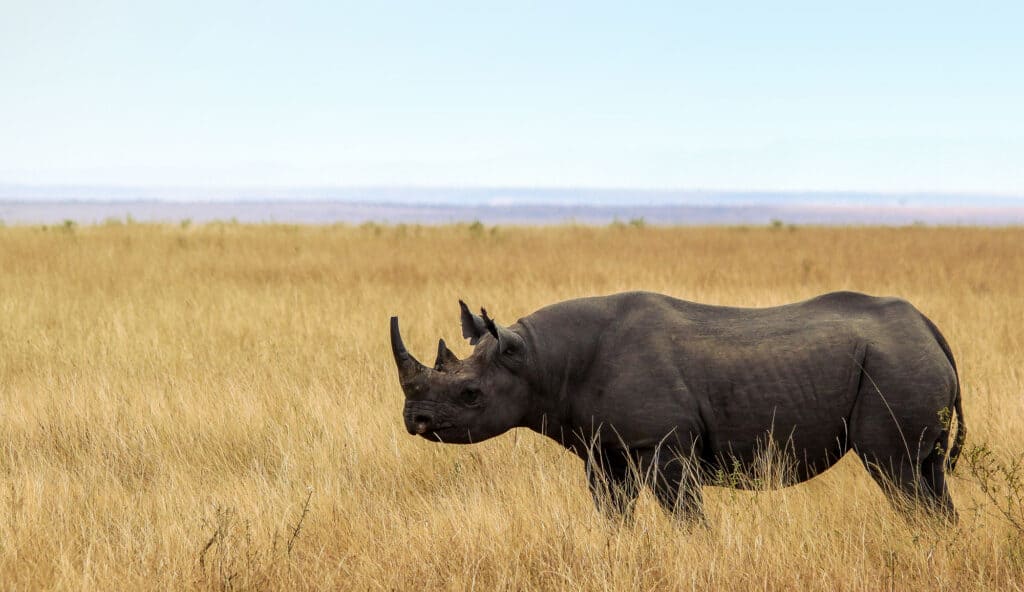
All rhinos are endangered. There are about 6,500 black rhinos like this one left in Africa.
©iStock.com/Black Rhinoceros, Rhinoceros, Savannah, Tanzania, Animal
Rhinoceroses are one of the largest species of megafauna in the world. Depending on the species they can be 8-13 feet long and 5-7 feet high. The only taller species in their habitats are African and Asian elephants. The most distinctive characteristic of a rhino is its horn. Some have one horn, others have two, with the longer one closer to the end of the nose. Technically they are not horns but keratin growths – the same substance found in hair and fingernails. Both males and females have them, but in black and white rhinos the female’s larger horn is longer and thinner than the male’s.

This Sumatran rhinoceros is cooling off and coating its thick but sensitive skin with a coat of protective mud.
©Ltshears – Public Domain
Rhino skin is up to 2 inches thick, enough to stop bullets fired at a long distance or low-caliber handgun rounds fired closer up. Nevertheless, the blood vessels are close to the surface, so they still get insect bites and sunburns. Like elephants, they enjoy taking mudbaths to give them some protection.
What Does a Rhinoceros Eat?
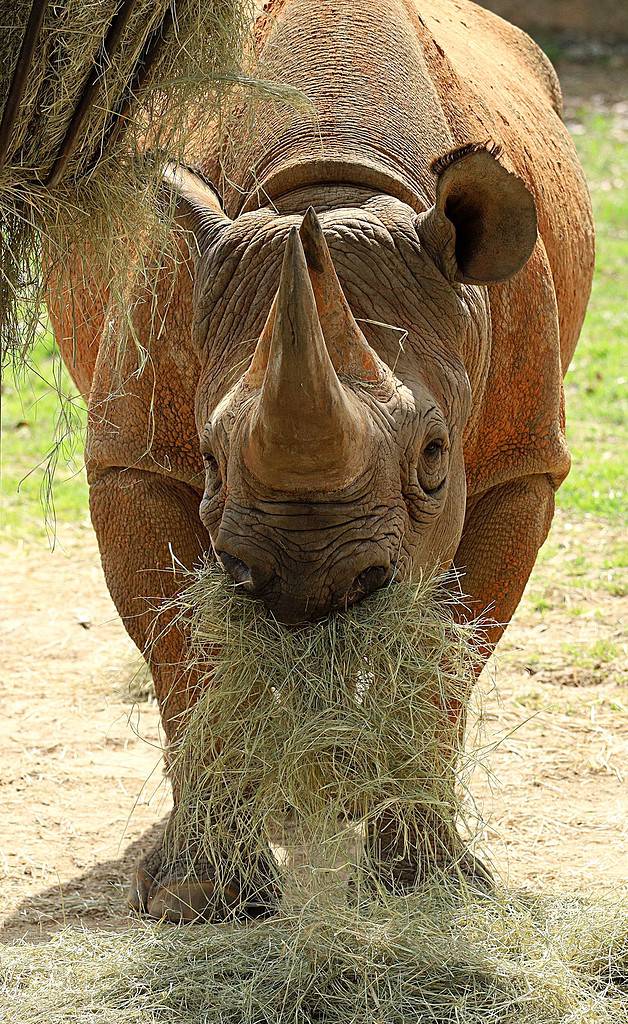
Rhinos get much of their nutrition from grazing up to 10 hours a day. This captive rhino is eating hay.
©Lilly P. Green/Shutterstock.com
Rhinos are herbivores. Much like horses and cows, they spend 10 hours or so a day grazing. They mainly eat grass, fruit, bark, twigs, roots, and leaves from shrubs and trees, including thorny species like acacias. For such a large animal, their lips are surprisingly dextrous, helping them pluck food and crop down even very short grass. Their mouths are wide so they can shovel food in at a fast pace. That’s important because they need to eat about 120 pounds of vegetable matter a day to sustain their huge bulk. One of their most helpful qualities is that they can eat several different species of plants that are toxic to other animals. By keeping these cropped down, they prevent other animals from eating them and getting sick. Rhinos can go 4-5 days without water, which is a helpful survival skill in drought-prone Africa.
Rhinoceros Temperament
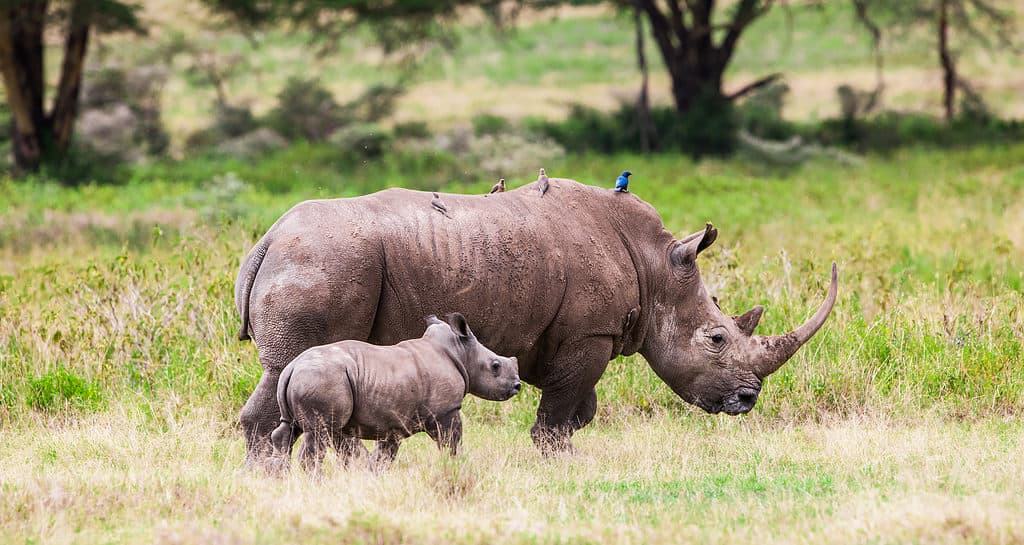
Most species of rhino are solitary creatures, but calves always stay close to their mothers to avoid lions and other predators.
©Travel Stock/Shutterstock.com
To put it in human terms, some species of rhinoceros are more extroverted, others are more introverted. White rhinos socialize more. They make groups of up to 14 or so females and calves. All the other rhino species tend to be loners. When rhinoceroses do greet one another they may rub their noses together. Bizarrely, night camera footage even captured a male rhino gifting a female with a pair of antelope horns (which she ignored)!
Rhinos have mercurial personalities. They can appear indifferent to their surroundings but are cautious and always on the alert. Something new in their environment might make them curious and go investigate. If they detect a threat they can charge at it aggressively, even if it’s a large Land Rover full of tourists on safari.
What Are Those Birds on Rhinos’ Backs?

Oxpeckers can eat hundreds of ticks and up to 12,000 larvae per day from rhinos or other large animals.
©EdenF/Shutterstock.com
The red-billed oxpecker is a bird that perches on the backs of rhinoceroses, zebras, and other large animals that will tolerate it. They help their host by eating ticks and other parasites off its hide, but they are also parasitic themselves, worrying at open sores to drink the animal’s blood. It sounds like a case of the cure being worse than the disease, but oxpeckers do offer another highly useful service. They act as an early warning system, raising the alarm if they see danger coming from any direction. So in a sense, they are the rhino’s “security cameras.”
Rhino Conservation
Current Rhino Population

The northern white rhino has been functionally extinct since 2018.
©KatWebb/iStock / Getty Images Plus via Getty Images
All species of rhino are gravely endangered, especially those found in Indonesia where only about 150 in two species remain. This is followed by about 4,000 rhinos in India and Nepal. In Africa, the northern white rhino became functionally extinct in 2018 when the last male died. The two last females are under 24-hour armed guard in Kenya. Efforts to intervene with medical technology to revive the species have not been successful so far. The southern white rhino has the largest number of any rhino and the best survival prospects. African rhinos have declined from about 500,000 at the beginning of the 20th century to only about 23,000 today, but in the past year have shown an uptick. This is a good sign of hope that conservation efforts are beginning to work.
Anti-Poaching Measures
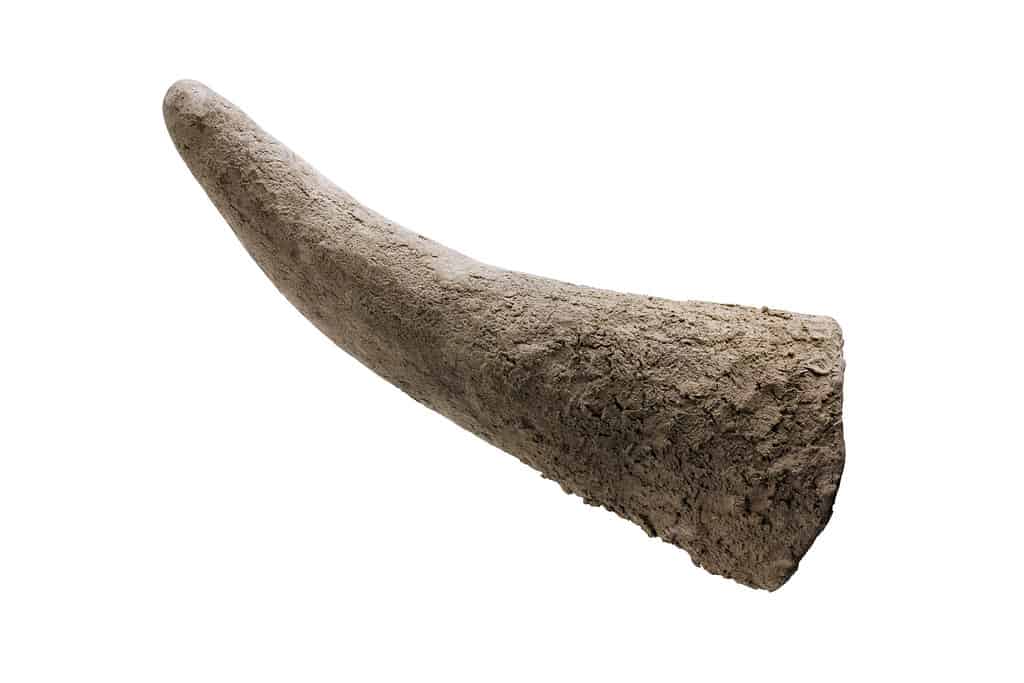
Rhino horns weigh 3-7 pounds. At $60,000 a pound, one horn can fetch a poacher $180,000-$420,000.
©Etienne Outram/Shutterstock.com
Two factors are driving all species of rhinoceros to extinction: habitat loss and poaching. Very few live outside national parks and reserves today, and even on protected land poachers still kill rhinos at a rate of about 3 a day in Africa. Their objective is the horn, which can fetch $60,000 a pound on the black market. Here are some of the methods that have been tried to stop the slaughter:
Horn Removal
An effective way to stop rhino poaching is for wildlife officials to tranquilize the animals and cut off and destroy their horns. Another method is to poison and dye the horns to make them undesirable to poachers without harming the animals. Programs like that have been proven to stop poaching, but they’re expensive, and subduing such large and dangerous animals is a safety risk to them and to the humans trying to help them. Moreover, it has to be done every 18-24 months as the horns continually grow back.
3D Printed Horns
With the invention of 3D printing technology, some innovators have created realistic-looking synthetic horns that can be used for carvings and substituted for real horns. Researchers have also worked on ways to bundle horsehair to make fake horns that can be ground into powder. Some have suggested flooding the black market with such products to force the price down and make poaching less profitable. This is a controversial approach, though, because the trade in synthetic horns is not illegal but real horns are. This could complicate law enforcement efforts as poachers might try to pass off real horns as synthetic.
Education

©Damian Ryszawy/Shutterstock.com
Villagers living near rhinoceros habitats do not always realize how rare and precious these animals are. They just see a large dangerous animal that can hurt people and trample down crops or as a source of an enormous amount of money for one night’s work. They need to be aware that these animals can be much more valuable to them living than dead, by bringing tourists to their region, for example. They also need to understand the legal consequences for those who are caught poaching. Education and awareness campaigns in China and other countries where people use rhino horn medicinally can help reduce demand.
Anti-Poaching Dogs
Trained dogs can track poachers and lead wildlife officers to them. They can also sniff out stashed guns and other equipment poachers may have quickly hidden as the authorities arrived.
Business Development

Tourist dollars can pour money into a local economy and create incentives to preserve endangered species.
©soft_light/Shutterstock.com
An effective way to help preserve a species is to make it more valuable alive than dead. Ecotourism has become a popular trend recently. It offers tourists the opportunity to appreciate animals in their natural habitat and learn about their role in the ecosystem and how they are being protected. By bringing money into local communities, this type of business gives local citizens a strong incentive to protect endangered species like the rhino. A great example is Wild Sumatra. Check them out and help save endangered wildlife on your next vacation!
Thank you for reading! Have some feedback for us? Contact the AZ Animals editorial team.

